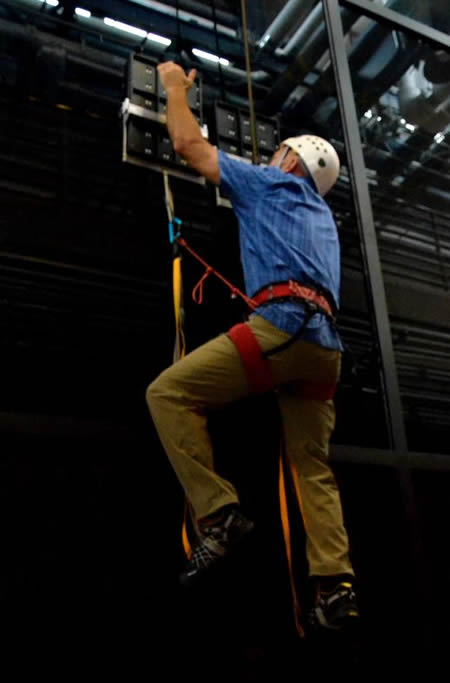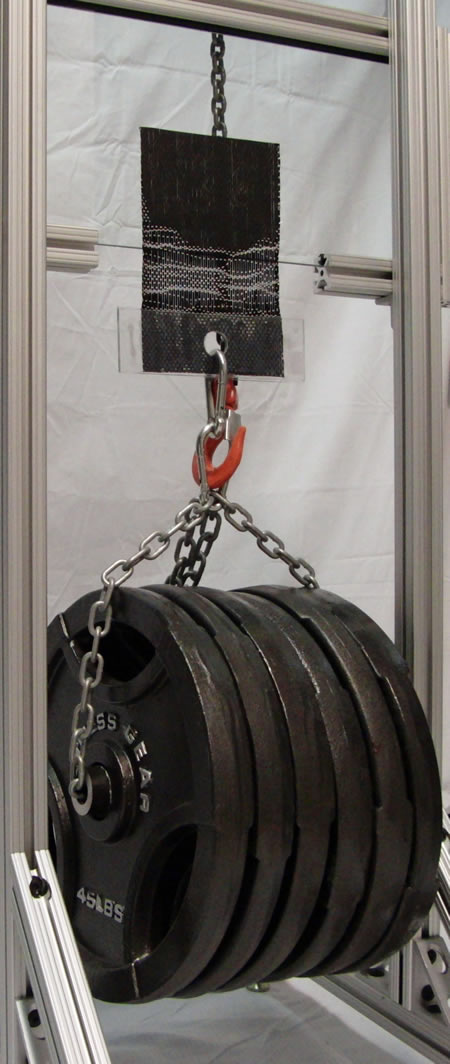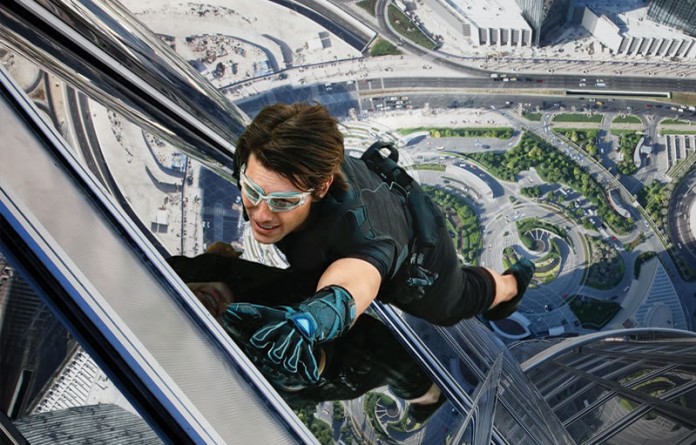
The technology assisting the climber was based on a novel polymer microstructure developed by the Draper Lab. The historic ascent involved a 99 kg climber (218 pound) ascending and descending a glass wall 7.6 meter tall (25 feet) ,while carrying an additional load of 22.6 kg (50 pound) in one trial.
On this trial the climber did not use any climbing equipment other than a pair of hand-held, ‘geckoskin’ paddles. These paddles are applied with novel polymer microstructure technology developed by the Draper Laboratory of Cambridge, Mass.
Continued testing under the Z-MAN program will evaluate movement and performance over different surfaces, including concrete, dusty brick and other materials.
The gecko is one of the champion climbers in the animal kingdom, so it was natural for DARPA to look to it for inspiration in overcoming some of the maneuver challenges that U.S. forces face in urban environments
As taken from a sci-fi movie, these novel tools will enable climbers to move on vertical surface, a movement that currently requires a complex setup of ropes, ladders or lifting devices. On urban assaults or evacuation missions from high rise buildings, using conventional tools is often limited to sequential movement, where the first climber often takes the highest risk.

DARPA’s Z-Man program aims to overcome these limitations by delivering a safe, flexible and reliable climbing tool providing warfighters carrying full combat load the manoeuvrability, stealth and rapid response, to fight in ‘urban canyons’. The program is implementing biologically inspired climbing aids that can be adapted to match vertical walls constructed from typical building materials. To meet the challenge researchers turned to imitate the mechanism used by the gecko, nature’s champion climber.
“The gecko is one of the champion climbers in the Animal Kingdom, so it was natural for DARPA to look to it for inspiration in overcoming some of the maneuver challenges that U.S. forces face in urban environments,” said Dr. Matt Goodman, the DARPA program manager for Z-Man. “The challenge to our performer team was to understand the biology and physics in play when geckos climb and then reverse-engineer those dynamics into an artificial system for use by humans.”
Geckos can climb on a wide variety of surfaces, including smooth surfaces like glass, with adhesive pressures of 15-30 pounds per square inch for each limb, meaning that a gecko can hang its entire body by one toe. The anatomy of a gecko toe consists of a microscopic hierarchical structure composed of stalk-like setae (100 microns in length, 2 microns in radius). From individual setae, a bundle of hundreds of terminal tips called spatulae (approximately 200 nanometers in diameter at their widest) branch out and contact the climbing surface.

A gecko is able to climb on glass by using physical bond interactions — specifically van der Waals intermolecular forces — between the spatulae and a surface to adhere reversibly, resulting in easy attachment and removal of the gecko’s toes from the surface. The van der Waals mechanism implied that it is the size and shape of the spatulae tips that affect adhesive performance, not specific surface chemistry. This suggested that there were design principles and physical models derived from nature that might enable scientists to fabricate an adhesive inspired by gecko toes.
Humans, of course, have much more weight to carry than a gecko. One of the initial challenges in developing a device to support human climbing was the issue of scaling: a typical Tokay gecko weighs 200 grams, while an average human male weighs 75 kilograms.
As part of the program a synthetically-fabricated reversible adhesive ‘Geckoskin’. During static tests this material demonstrated supporting a static load of up to 300 kg (660 pounds) over a vertical glass wall, using a single 0.01 m2 (16-square-inch) sheet of Geckoskin.
To enable dynamic climbing like a gecko at this larger scale required that the engineers create climbing paddles capable of balancing sufficient adhesive forces in both the shear (parallel to the vertical surface) and normal (perpendicular to the vertical surface) directions. That feature is necessary for a climber to remain adhered on a surface without falling off while in the act of attaching and detaching the paddles with each movement.
The Draper Laboratory team was also challenged to create novel micro- and nanofabrication technologies to produce the high-aspect-ratio microstructures found in the gecko toe.
In the process of achieving that capability, the Z-Man performers transformed the fundamental design and development of reversible adhesives for potential biomedical, industrial, and consumer applications.




















